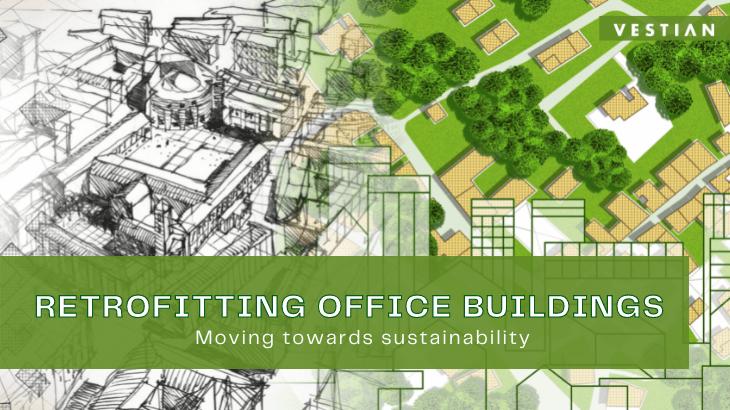With net zero commitments leading nations and businesses to create strong action plans, the focus is fast moving towards a more sustainable time ahead. Amidst the flurry of new zero pledges, it is imperative to bolster them with plausible and rational propositions. Given that the real estate sector is a key component of urban development, it evidently forms the nucleus of the goal of creating an environmentally sustainable future.
While the real estate sector has started adopting green construction, sustainable and energy-efficient strategies in the construction of new buildings, the overall impact will still be meagre. This is because existing buildings continue to increase their carbon footprint and energy consumption over their lifespan which is around 50 to 60 years. To this end, experts have noted that retrofitting existing buildings can help in delivering environmental, economic and social benefits to the society.
Retrofitting as a solution and methods implemented:
The most important issue in buildings is energy conservation, followed by water saving, waste reduction and ecological protection. In Indian commercial buildings, HVAC alone consumes more than 50% of energy. In the American context, before retrofitting commercial buildings, the American Society of Heating, Refrigerating and Air-Conditioning Engineers suggests three levels of energy audit be completed to assess the current performance and the potential savings of the building. The findings of the audit act as a key for determining the most suitable retrofitting strategy. These include methods like adding insulation to exterior walls and floors, application of coats and foams, green roofing and ponding, new lighting shelves, making use of photovoltaics and LEDs, integrating Information Management software, using energy-efficient motors and appliances among others. For HVAC in specific strategies like chiller sequencing, use of low approach cooling towers, installation of Variable Frequency Drive and Auto Tube Cooling Systems are used. Additionally, new methods like façade systems, cool roofs, use of phase change materials in paints and other mixable building products and installing Aerogel panels are also being widely considered for adoption in the retrofitting processes.
The Daikin office building in Dubai, UAE is an example of how the sustainability goals were achieved using retrofitting techniques. Methods like efficient air conditioning for reduced energy consumption, fresh air handling units for indoor air quality, intelligent touch energy management systems, innovative lighting and environmental solutions were used which focused on facilitating functionality, user comfort, environmental impact and alignment with regulations.
Challenges and possible solutions:
While retrofitting buildings is one of the ways forward towards achieving sustainability, it does have its own set of challenges, major one being, the high initial cost and the payback period which often causes owners insecurity regarding the feasibility of the retrofits when compared to reconstructing. This is where Energy Service Companies (ESCOs) have emerged as an efficient solution. ESCO business model operates on a turnkey basis and its earnings are derived from customer savings generated from energy consumption reductions. Additionally, issues like lack of awareness and industry experience can be tackled by integrating technological advancements and adequate due diligence in the process. Another critical obstacle is the lease structure of the commercial buildings, wherein the tenant pays a major part of the operational cost and owners have no incentive to retrofit their buildings. A proper framework of government policy showcasing the government’s sustainability vision and the advantages of retrofitting would drive the owners in favour of energy retrofitting.
Finally, the potential effects of Jevon’s paradox or the Rebound effect cannot be ruled out which makes a case that, savings made by high-performance buildings may become an incentive for people to increase energy consumption owing to rising comfort standards.
Outlook:
Retrofitting has long-term tangible and intangible benefits. By retrofitting, the lifespan of buildings is increased by around 10 to 40 years. Expected operational cost savings over 5 years for new green buildings is 14%, while that for green retrofits is 13%. The production of associated wastes can be prevented while conserving embodied energy. The occupancy rate, occupant satisfaction and productivity are significantly increased. As per several research surveys, more than 50% of occupants who work in environmentally sustainable buildings found their employees to be more productive.
Thus, retrofitting an existing building represents an opportunity to enhance the energy performance of the buildings and achieve sustainable development by upgrading the elements and components of the building. Going forward, real estate stakeholders in India need to firmly deliberate upon retrofitting existing buildings in the country’s key office markets as it can help in reducing GHG emissions and energy consumption by a considerable margin.
